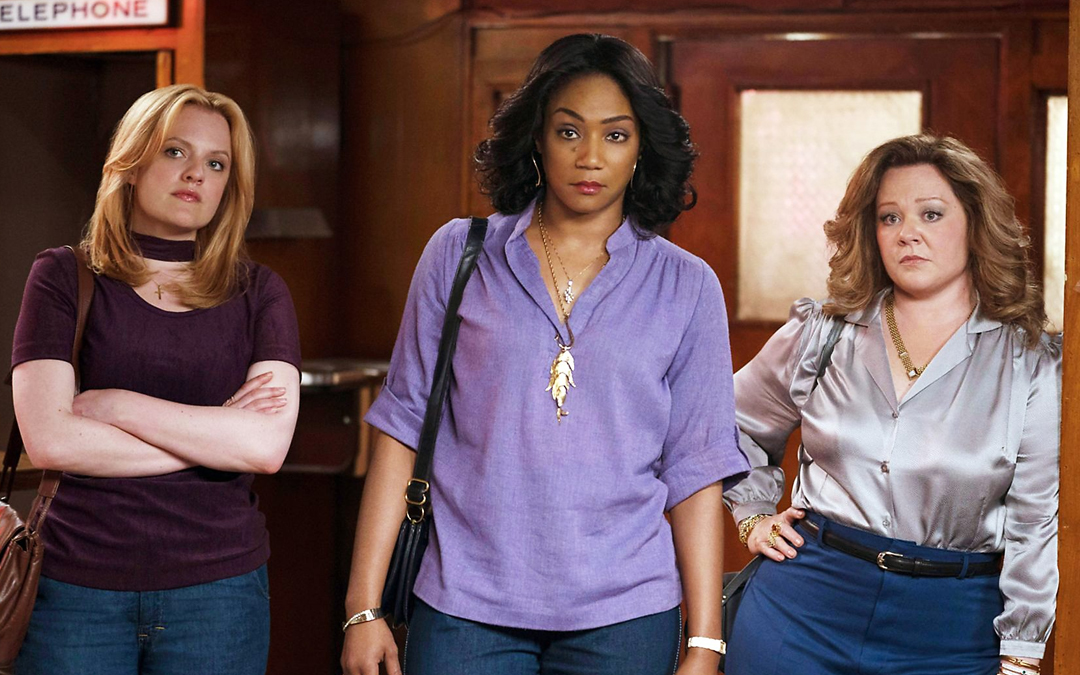All the Write Moves: Destroyer
December 31, 2018
Contemporary media has no shortage of stories about complicated police detectives, but there’s always room in the mix for a smartly-crafted piece that uses a murder mystery as a means of exploring character. Destroyer, the new film from respected indie director Karyn Kusama, fits the bill. Written by Phil Hay and Matt Manfredi, the picture stars Nicole Kidman as a Los Angeles cop whose traumatic past gets revived by the discovery of a dead body.
While this may sound like familiar terrain — think The Fall, The Killing and a zillion other TV shows — Destroyer is designed to achieve something very specific; the forensic investigation of one troubled woman’s soul. As will become evident by looking at some of the film’s storytelling techniques, Destroyer offers viewers a tangible crime story in order to grasp and sustain interest, but at its core, the movie tries to answer difficult questions about how a woman makes choices — and how she deals with their gruesome consequences.
An enigma inside a mystery
The opening sequence of Destroyer is filled with cryptic images, because our first vision of Erin Bell (Kidman) finds her sleeping in a car, her face etched with fatigue and the ravages of experience. What brought her to this state? What are her goals? And why is the first audio we hear a 187 call over a police radio? This opening attack does a good job of sparking audience curiosity, and then the script doubles down by presenting an even bigger puzzle in need of solution.
Erin exits her car and walks to a crime scene, where she’s greeted with hostility by other detectives. Then she examines a corpse in an aqueduct. Right away, this scene triggers basic human curiosity by raising questions. Who is the corpse? Who committed the murder? And why does Erin, who seems detached from life in every other respect, seem so interested in this particular crime?
Whereas the opening sequence suggests a character enigma, the second sequence delivers a conventional whodunit. This technique of nesting an enigma within a mystery is not unique to Destroyer, but it’s executed quite well here. The underlying notion, of course, is that it takes a while to build a connection between audiences and characters, so it’s unreasonable to assume that curiosity about Erin’s situation will sustain interest for two hours. Hence the trick of associating her character story with a conventional mystery, the latter of which gives the overall narrative shape and tension.
As the movie progresses, the connections between the enigma and the mystery grow deeper and deeper, so by the time the film reaches its conclusion, the resolution to one is also the resolution to the other. Whatever its other flaws, Destroyer deserves praise for achieving unity in its storytelling, since unity is one of the most effective methods for ensuring that a film is compelling. When this works, we don’t just want to know how the story ends — we need to know.
Takeaway: Use a genre hook to lure audiences into the world of your characters
Linked by ink
When constructing a story that takes place in two different time frames, it’s always helpful to create visual signifiers so audiences always know which time frame they’re watching at any given moment. Destroyer has at least two such signifiers. For one, Erin is considerably younger in flashbacks than she is in present-day scenes, so the way she appears in present-day scenes — gaunt, haggard, short-haired — provides such a stark contrast to her past self that the film’s jumps between past and present are always easy to notice.
Another, somewhat subtle device takes the form of a clue at a crime scene. When Erin looks at that corpse in the aqueduct, she notices a tattoo on the back of the corpse’s neck. The design is three circles in a row. A bit later, before the story makes its first jump into the past, the camera catches something on the back of Erin’s neck — faded traces of an identical tattoo. Whereas the difference in age between flashback Erin and present-day Erin provides context and grounding, the tattoo link adds mystery. What connection could a police detective possibly have with a person whom we assume to be a generic street criminal?
As with the larger technique of embedding an enigma within a mystery, this simple tool — using a visual signifier to raise questions — helps energize the film’s modality of shifting back and forth between the present and the past. For viewers engaged by Destroyer, curiosity about the connection suggested by the tattoos eventually leads to emotional investment once the connection becomes clear.
Takeaway: Use provocative clues to lure viewers into your story
Influence is power
It’s giving nothing away to indicate that Erin’s central mission throughout Destroyer is to capture Silas (Toby Kebbell), the leader of an armed-robbery crew. Yet the filmmakers endeavor to present Silas as something more than a ruthless criminal — he’s closer to a cult leader in terms of his ability to influence others. For example, Silas’ first proper scene is a cruel encounter during which he persuades an underling to play Russian roulette for no reason except that watching the underling face mortality amuses Silas.
When constructing powerful characters, it’s important to remember that powerful people delegate. Even Thanos, the supervillain in Avengers: Infinity War, has subordinates to help him achieve his horrific goals. That’s influence, and influence is power. So even in reality-based films, one of the strongest techniques you can explore when crafting a powerful character (whether noble or villainous) is to illustrate that character’s ability to bend the wills of others. A character whose power is isolated to his or her own person casts a short shadow — for instance, the danger in a slasher movie ends when the hero defeats the slasher. Conversely, a character with followers is much more formidable, and not just because those followers will protect the influential character and/or execute his or her wishes.
The useful insight is that a character with the ability to influence subordinates might also be able to influence people on his or her own level. In the original Star Wars movies, Darth Vader isn’t frightening simply because he can Force choke people and swing a lightsaber. He’s frightening because he, as the main villain of the original film series, has emotional influence over Luke Skywalker, the main hero of the original film series.
Strange as it may seem, the grounded portrayal of Silas in Destroyer applies the same storytelling principle, and it’s one that you can apply in your own scripts, whether you’re developing a terrifying villain or an inspiring hero. Because isn’t the glory of, say, Rocky Balboa his ability to make others feel empowered? Noble characters capable of influence use their abilities to elevate others, and craven characters capable of influence use their abilities to manipulate others. Either way, influence is a trait shared by many of cinema’s most indelible characters.
Takeaway: The aura of a truly powerful character extends beyond his or her physical person
Written by: Peter Hanson
Peter Hanson is a Los Angeles-based writer, filmmaker and teacher. He directed the screenwriting documentary Tales from the Script, and he teaches at Pepperdine University and UCLA Extension. He provides script consulting at www.GrandRiverFilms.com.



